How to consolidate rows in Excel
You can watch a video tutorial here.
Excel is a spreadsheet application that lends itself easily to creating lists, tables, and databases. When combining data from multiple sources, you will frequently encounter rows that have duplicate values. To analyze the data or to prepare a summary, you will need to consolidate the rows. When consolidating the rows, you also need to specify how the values associated with the duplicates will be aggregated (e.g. sum, count). In Excel, there are 2 ways of doing this.
Option 1 – Create a pivot table
Step 1 – Select the data

- Select all the data that contains duplicates
Step 2 – Open the PivotTable from table or range box
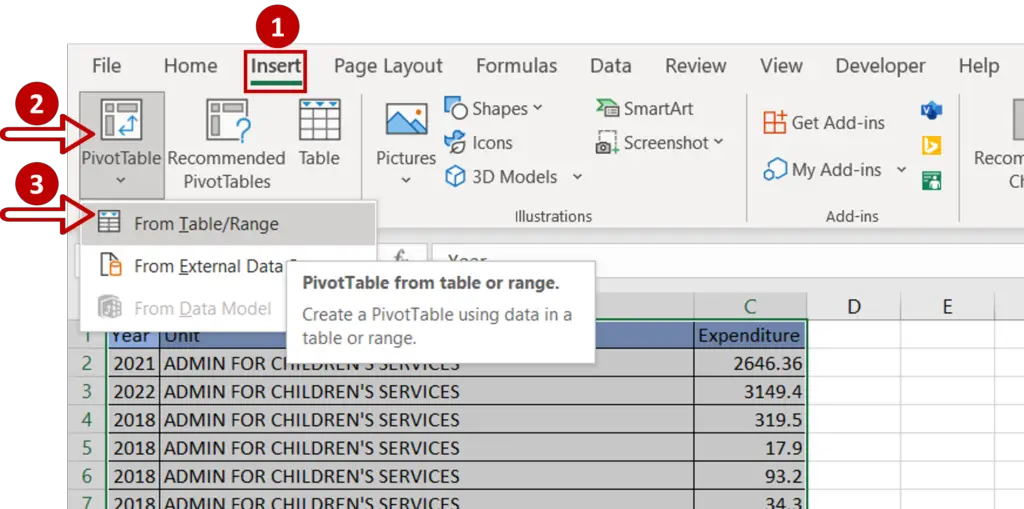
- Go to Insert > Tables
- Expand the PivotTable dropdown
- Select From Table/Range
Step 3 – Check the settings

- The range is automatically populated
- Choose New Worksheet
- Click OK
Step 4 – Define the Pivot table structure
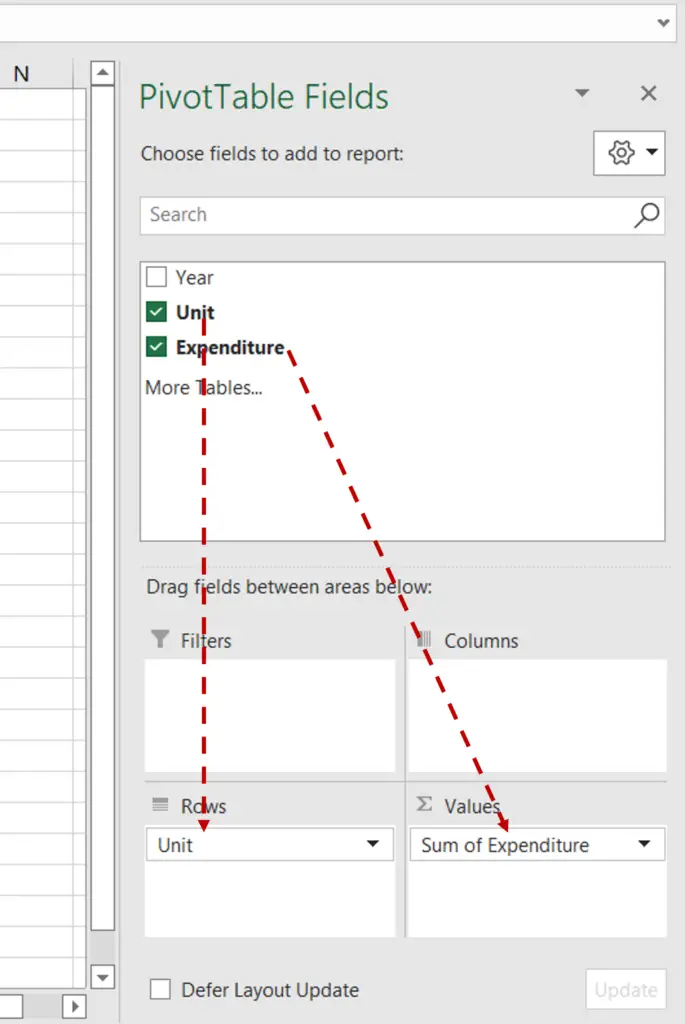
- Drag ‘Unit’ into the the Rows pane
- Drag ‘Expenditure’ into the Values pane
- The ‘Expenditure’ is automatically summed
Step 5 – Check the result
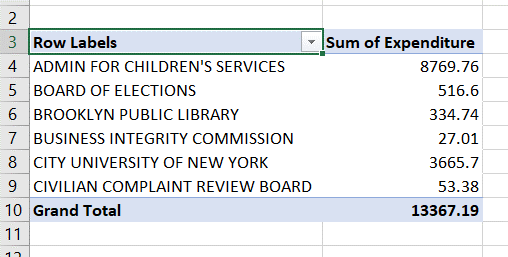
- The Pivot table is created
- The rows containing duplicates of ‘Unit’ are merged and the ‘Expenditure’ values are summed
Option 2 – Consolidate the data
Step 1 – Select the destination
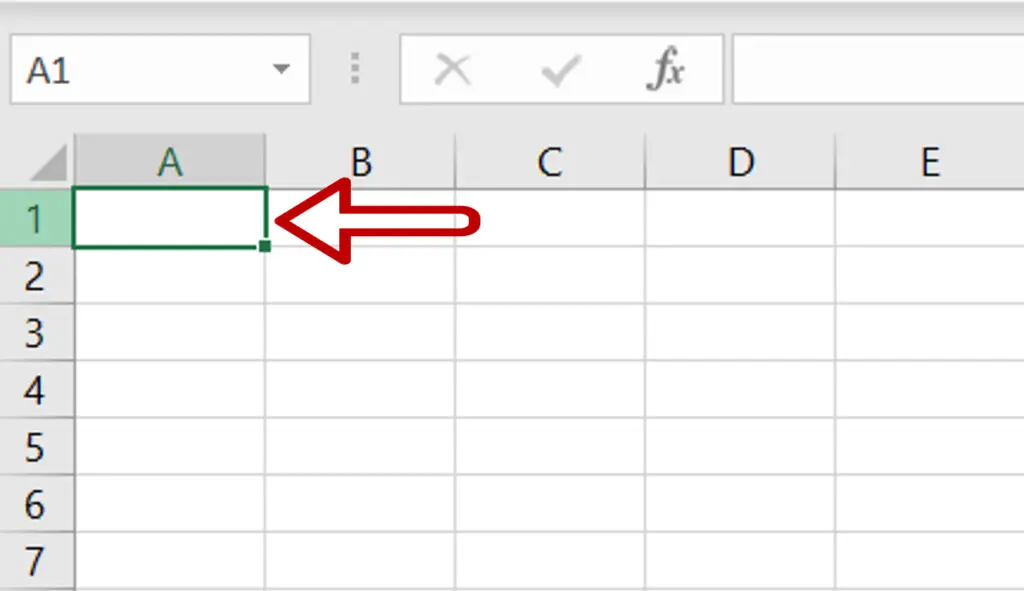
- Select the cell in which the merged data is to be placed
Step 2 – Open the Consolidate box
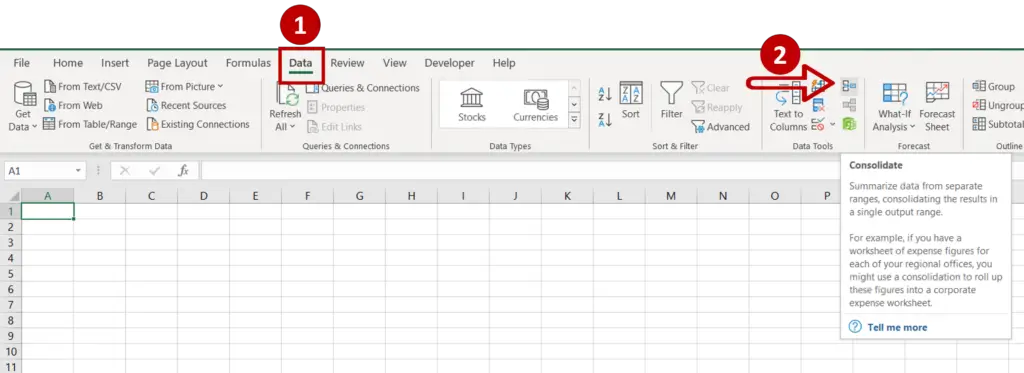
- Go to Data > Data Tools
- Click on the Consolidate button
Step 3 – Select the data
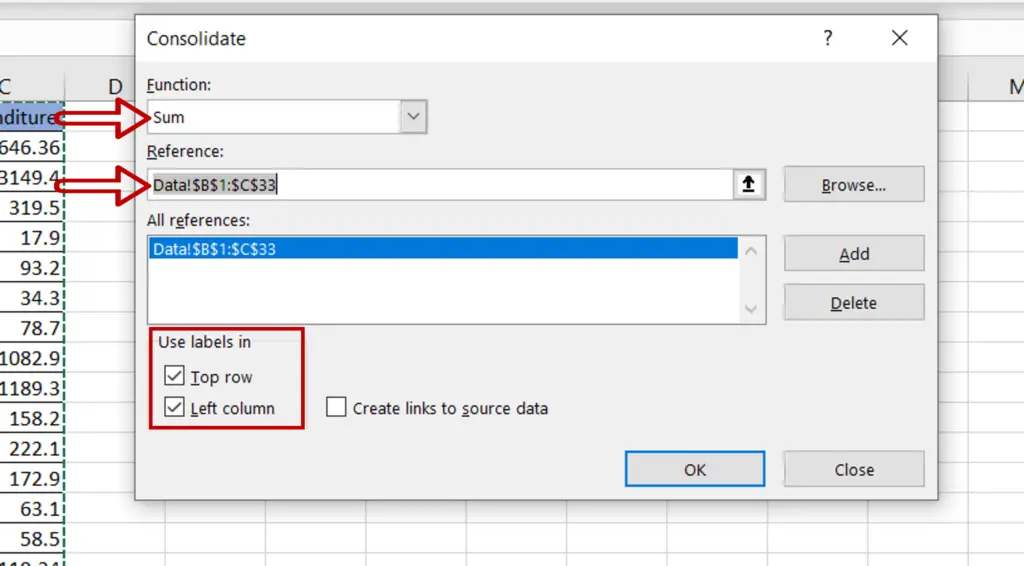
- Choose the Sum function
- Place the cursor in the Reference box
- Select the ‘Unit’ and ‘Expenditure’ columns
- Click Add
- Tick Use labels in:
- Top row
- Left column
- Click OK
Step 4 – Check the result
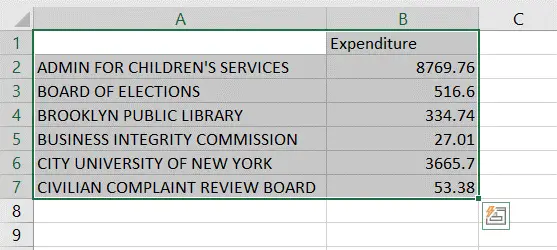
- The rows are consolidated
- The expenditure for the rows that have the same ‘Unit’ is summed



